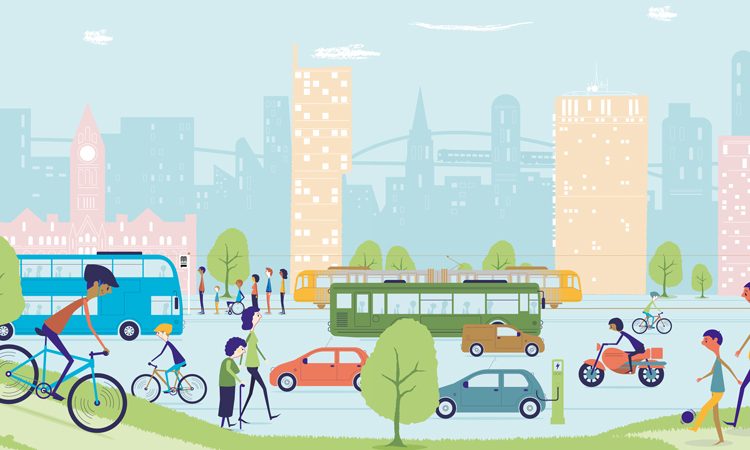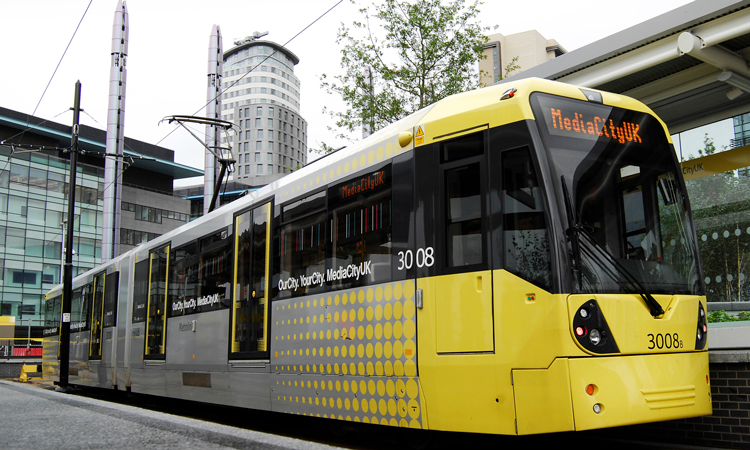MaaSive transport advancements are on their way
- Like
- Digg
- Del
- Tumblr
- VKontakte
- Buffer
- Love This
- Odnoklassniki
- Meneame
- Blogger
- Amazon
- Yahoo Mail
- Gmail
- AOL
- Newsvine
- HackerNews
- Evernote
- MySpace
- Mail.ru
- Viadeo
- Line
- Comments
- Yummly
- SMS
- Viber
- Telegram
- Subscribe
- Skype
- Facebook Messenger
- Kakao
- LiveJournal
- Yammer
- Edgar
- Fintel
- Mix
- Instapaper
- Copy Link
Posted: 12 June 2019 | Gareth Turner - TfGM | No comments yet
Gareth Turner, Head of Fares and Ticketing at Transport for Greater Manchester, explains how the appetite for on-demand services is spreading to transport, and outlines the steps that the UK’s transport network needs to consider, from payments to collaboration, in order to make MaaS a reality.


You only have to look at the world around us, or more specifically the smartphones around us, to see the value customers place on convenience. The retail, entertainment and food industries have been completely transformed by platforms like Amazon, Netflix and Deliveroo that leverage technology to match supply with demand.
This steady wave of innovation is killing off traditional markets and commercial models. It’s also creating new ones that are changing the way we live, how we access services and the whole concept of personal ownership – how many of your friends have thrown out their CD collections since the advent of Spotify?
Improving mobility
Mobility-as-a-Service (MaaS), however one defines it, and particularly if your definition extends beyond the horizon of personal mobility, has the potential to revolutionise the way that people organise their daily lives, opening new and existing mobility options to a wider market. This presents an opportunity to think differently about the way we approach transport planning and therefore how we plan our towns and cities.
Imagine a world where demand for the morning school run is aggregated through a unified mobility platform that schedules chaperoned, demand-responsive transport services to provide safe home-to-school journeys for young children, permitting parents to make less restricted choices about their own commutes and leave their cars at home. Local authorities could then reallocate non-productive land around transport hubs, currently used for car parking, allowing it to be used to locate essential services, cultural and leisure facilities, and housing. This reallocation of space could stimulate regeneration within communities and further incentivise the use of more sustainable transport modes leading to a virtuous circle of integrated planning and place-based growth. However, while the potential future benefits of that scenario are significant (in the context of health, congestion and air quality etc.), the reality is that monetising those benefits to support a sustainable commercial model will require a number of multilateral conversations that are unlikely to be conducted at a pace that keeps up with the voluble ambition of the MaaS cheerleaders.
How can we make the case to get there more quickly?
There are undoubtedly some immediate, headline benefits of more effectively matching demand and supply in a transport context. These include making better use of available capacity and, therefore, the facilitation of more efficient, multimodal transport networks. With the appropriate level of collaboration, this could help to drive down the costs for transport operators and lower fares for our customers.
Furthermore, there are some direct customer benefits of MaaS-type platforms that could help transport operators to stimulate and manage demand. Among these benefits, achieving simplicity is often held up as one of the key objectives of fares and ticketing strategies. Indeed, during the development of Transport for Greater Manchester’s 2040 Transport Strategy, customers told us that being able to easily understand and choose between the options available to them would remove a significant barrier to travel. The easiest way to achieve a simple fare structure is to remove choice, for example by introducing a flat fare.
One of the exciting things about MaaS is that the choice can be simplified for our customers without affecting the underlying fare structure, and therefore without affecting an operator’s ability to price for different markets. This means that the pricing model underpinning MaaS can be developed to be complicated, if necessary, without passing that complexity on to our customers. Consequently, it should be possible (if not easy) to build revenue-neutral commercial models that allow operators to participate in MaaS ecosystems without being reliant on subsidy from the public sector.
Why, then, given the short- and long-term benefits of MaaS, have operators and public transport authorities been slow to react to the opportunity – particularly, as the technology required to achieve this is relatively advanced.


Working collectively
Part of the issue is the tendency for our industry to develop new ideas in geographical silos. Whether publicly owned, local divisions of large private operators or SMEs, many operations are defined and designed within relatively small areas and innovation is sometimes bound by those geographies. This can limit the scope of ideas, the funding available to develop those ideas and most importantly the level of collaboration required to coordinate the many stakeholders in the industry and convince them of mutual benefits. From a public transport authority’s perspective, the current lack of a clear and cohesive conversation about MaaS within the UK makes it difficult to really understand what legislative and regulatory changes might be required to support its development and to establish the lobby that will be required to bring about those changes. MaaS has the potential to fundamentally change how the public and private sectors invest in transport networks and it is therefore critical that we are talking now about what that future might look like. It would be remiss of any of us to assume that an effective, integrated MaaS offering can be delivered by anything other than a multilateral approach.
Ticketing and payment
Another current hurdle to the development of MaaS is the proliferation of ticketing and payment systems available to operators when introducing new ticketing and fare collection systems. In the UK alone there are several different perspectives on the future of fare collection and ticketing, ranging from the development of ITSO on Mobile to barcode ticketing and Bluetooth check in/check out. It’s likely that the public acceptance and low operational cost of open-loop payment platforms will see large operators increasingly deploy those systems on their networks and a level of standardisation should facilitate a commercially successful MaaS solution. However, it will be important that new mobility providers, for whom the deployment of such systems is unlikely to be economically or operationally viable, can also participate without penalty. As a result of this, the first commercially successful MaaS solution will probably be one that is media agnostic, does not prescribe a ticketing or fare collection standard to operators and allows for the low-cost integration of existing systems.
In my view, if we look to the evolution of other industries as a predictor of the future, then Mobility-as-a-Service in some form it is inevitable. There are most likely sufficient commercial and strategic benefits to support its development across both the private and public sectors, but we need to adopt a collaborative approach to maximise those benefits. I do think that we sometimes have a tendency to oversimplify the concept and underplay the legislative and regulatory work that will be required to deliver MaaS in a coherent and coordinated way – but you probably would expect me to say that as a public sector officer.
Biography


Related topics
Multimodality, Passenger Experience, Ticketing & Payments
Issue
Issue 1 2019
Related cities
Greater Manchester, United Kingdom
Related organisations
Transport for Greater Manchester (TfGM)
Related people
Gareth Turner








